For the juiciest turkey on the block, a turkey brine recipe with salt results in a plump, moist, and flavorful turkey every time. But is a wet turkey brine recipe or a dry turkey brine better? I tested both, and these are my recipes and results.
Choosing one of my turkey brine recipes is probably the most important step in my Thanksgiving Prep Guide. I discovered the genius of turkey brining several moons ago and now, I can’t make a Thanksgiving turkey without one. Whether to brine my turkey or not isn’t the question. It’s which method to go with: A wet brine soak in a saltwater solution or a dry brine rubbed into and under the skin? Brining turkeys, chickens, and other meats (my brined pork loin roast is a fave) yields flavor-packed finger-lickin’ good deliciousness. Brining alters the protein structure and muscle fibers of the meat, so it retains more moisture during cooking. For turkeys, in particular, this enhances the moist, plump factor and encourages a juicier bird with crisper skin.
I’ve used both wet and dry brine methods before, but never in a side-by-side comparison. Until now. This turkey brine recipe actually features two recipes (one for a wet brine and one for a dry brine). The respective brines were tight contenders for the best method, but my team of taste testers did choose a winner. That’s why I’m giving you both of my turkey brine recipes, plus my team’s results, for you to try and see for yourself.
Why You’ll Love It
- I share not one, but two different brining techniques—a wet brine and a dry brine, and both work amazingly for achieving a turkey that’s juicy, tender, and so flavorful
- I’ve included several helpful and easy tips and tricks for how to brine a turkey
- You can’t go wrong with either of these brining methods because either one will give you a much more flavorful and juicy bird
What’s the Difference Between a Wet and Dry Turkey Brine?
Salt and sugar are the key ingredients in both wet and dry brines. Both methods infuse flavor into the protein by changing the turkey’s structure so it retains more moisture as it cooks.
Here are the differences between a wet and dry brine:
A wet brine works quickly (in as few as 12-24 hours) to infuse moisture into the turkey; skin, meat, and all. The brine penetrates directly into the flesh and skin, plumping and adding water and moisture as it soaks in its salt bath. When cooked, this results in an amazingly juicy turkey.
But, a wet brine can be somewhat awkward to maneuver since you’ll need more fridge space for a container big enough to submerge a 14 lb turkey in 2 gallons of saltwater solution (or more if your turkey is larger) and keep it cold as it brines (I share a different way to do it below). A wet brine also adds more water to the skin, resulting in a lesser browned bird.
On the flip side, a dry brine draws out moisture from the meat, then resettles into itself as it cooks, as a self-marinade in its salty brine. Dry brines take longer to work their magic (at least 24-48 hours), but take less fridge space since you can set it on a baking sheet and let it do its thing. And, the salt pulls out the moisture from the skin so it tightens and browns easier.
Illustration from Real Simple
How Long Should Turkey be in Brine?
Here’s my timeline for brining a turkey:
- 1-2 days for the turkey to thaw in the refrigerator
- 24 hours of wet brine time, plus 12-24 hours uncovered in the refrigerator to dry the skin
OR - 24-48 hours of dry brine time
I plan on at least 4 days before cooking to start my turkey-making process.
What Should I Brine My Turkey In?
I use this box of three super strong brining bags or these single sold brining bags that work like a charm. Or, you could skip the bag and use a container large enough for the bird and 2 gallons of water and ice to fully submerge the bird. Or, line a 5-gallon bucket or ice chest with two garbage bags.
What’s in This Wet Turkey Brine Recipe
Kosher salt is the key ingredient in a wet brine. Mixed with hot water to dissolve, the brine absorbs into the turkey for flavor. Wet brines work best when the salt and sugar are fully dissolved.
Here’s what you’ll need to make this wet turkey brine:
- Kosher salt (I use Morton’s Salt. If you use Diamond Crystal, use ¼ more than what’s called for, as it’s not as concentrated as Morton’s. Definitely do not use iodized salt as it’s way too concentrated.)
- Sugar (white or brown: sweeteners help with browning the skin)
- Water
- Whole peppercorns
- Fresh herbs like rosemary, bay leaves, parsley, and thyme
Additional flavorings to experiment with:
- Orange peels or lemon peels
- Sliced apples
- Cloves garlic
- Red or white onion
- Spices like juniper berries, mustard seed, star anise, chiles, allspice berries, cinnamon sticks
- Apple juice or cider in lieu of half of the cold water
What is the Formula for Brine?
When brining something large like a turkey, the longer you plan on soaking the turkey the weaker your saltwater solution should be.
Here’s my wet brine formula for a 14-16 lb turkey: 2:2:½
- 2 cups kosher salt
- 2 gallons water
- ½ cup sugar
Boil 8 cups of water with the salt, sugar, and other aromatics. Just boil for a minute or two until the salt and sugar are dissolved, or heat half of the water in a tea kettle at a time, and mix into the salt, sugar, and aromatics. Once dissolved, combine the salt water solution with more water to make 2 gallons of solution.
Add more water if needed. If the salt and sugar don’t seem to be dissolving, add more water to the solution and keep stirring. I’ve found that water can absorb only so much salt at one time, so the higher the proportion of water there is to take in the salt, the better it will dissolve.
Mix with ice water. Add the saltwater solution to the remaining amount of COLD water and ice to make up 2 gallons of the saltwater solution.
**NOTE!!! NEVER add hot or warm saltwater solution to a raw turkey or you’ll end up with a potentially very bad bacteria contamination situation. Always use room temperature or chilled saltwater solution. I always use ice cubes to make up part of my amounts of water.
Let the brine do its thing. Allow 12-24 hours for the turkey to brine, then allow for 12-24 hours for the skin to dry out so it browns and crisps when it cooks. If brining the turkey breast only, brine the breast for 6-8 hours.
Submerge That Bird
Prep your turkey. Take it straight from the bag, draining any of the residual juices over a baking sheet, then transfer right to the brining bag (I use this box of three super strong brining bags or these single-sold brining bags that work like a charm). DO NOT rinse your turkey. Rinsing the turkey can spread bacteria and salmonella in the kitchen, and nobody wants that.
Or, skip the bag and use a container large enough for the bird and 2 gallons of water and ice to fully submerge the bird. Or, line a 5-gallon bucket or ice chest with two garbage bags.
Bath time. Pour the brine over the turkey and add the herbs, and ice if using to make up for part of the water. It’s important the turkey is completely submerged in the wet brine, especially the breast since it is the part most likely to dry out.
Tuck in. If using a bag, squeeze out the excess air in the bag and secure it closed, cinching the bag around the bird. Set the bagged turkey in a roasting pan, a large stock pot, or an extra clean ice chest or cooler.
Keep it cold. Refrigerate your turkey (or keep it cold in your cooler) for 12-24 hours. Remove from the brine and pat dry. Refrigerate/chill again, this time uncovered for 12-24 more hours, to ensure crispier skin when cooked.
What’s in This Dry Turkey Brine Recipe
A dry brine draws the moisture out of the meat and then resettles into itself as it cooks. Dry brines take less time than wet to work their brining magic.
All you need for a dry brine is:
- Kosher salt
- Sugar (white or brown sugar)
How to Make a Dry Turkey Brine
- Mix your brine. For a 14-16 lb turkey, I stir 4 tablespoons of kosher salt with 4 teaspoons of sugar.
- Prep your turkey. Experts say never rinse a turkey before brining. Take it straight from the bag, draining any of the residual juices, into the brining bag. Rinsing the turkey can spread bacteria and salmonella in the kitchen, and nobody wants that. Place your turkey on a baking sheet with raised sides or in a roasting pan to catch the liquid the turkey will purge.
- Rub a dub that bird. With your fingers, gently loosen the skin from the breast and legs of the bird, as much as you can without tearing the skin. Rub the salt mix under and on top of the skin and inside the cavity of the bird.
- Let the brine work its magic. Set the turkey in the fridge for 24-48 hours.
Do I Rinse Turkey After Brining?
There are differing opinions about whether to rinse off your brine. I do not rinse the brine from the turkey. I have taste-tested the turkey rinsed and not, and haven’t found the turkey straight from the brine to be too salty. In the end, I don’t want to risk spreading bacteria through the kitchen so I don’t rinse.
For the wet brine, I pat the turkey dry then put it back in the fridge for 12-24 hours for the skin to dry out so it will crisp in the oven. But, if you do wish to rinse the turkey—because some of you will—rinse it before putting it back in the fridge, uncovered, to dry out, not after!
For the dry brine, I’ll brush any extra salt off the skin if it hasn’t been absorbed or if it seems excessive. Otherwise, I just leave it. Don’t rise the bird after dry brining or you’ll ruin the dried skin.
Wet or Dry Brine? Which One Was Best? The Taste Tester Results
You’ve patiently waited for the final taste test results. So, which brine tasted best?
From the start, my hopes were pinned high on the dry brine coming out on top. A dry brine has fewer steps to complete, takes up less room in the fridge, and browns better when cooked. In my head, I was already plotting the write-up for its winning announcement here.
But after my taste testers finished their task, the choice of best-tasting brine took a turn.
While the dry brine was deemed very good, the wet brine was declared to be better.
Pleasantly salty and plumped, the wet-brined turkey was moist, juicy, and everyone’s first choice. Although not as Malibu-Barbie browned as the dry-brined turkey, the wet-brined turkey’s uncovered rest in the refrigerator still produced a crisp skin that complemented the juicy meat.
So no matter which brine you choose, brining is the way to a better turkey every time. But don’t forget that gravy!
If you make this recipe, please let me know! Leave a ⭐️⭐️⭐️⭐️⭐️ rating on this recipe below and leave a comment, take a photo and tag me on Instagram with #foodiecrusheats.
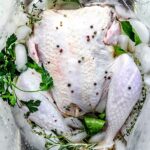
THE BEST Turkey Brine Recipe — Wet
Equipment
- Heavy Duty Turkey Brining Bags
- Rimmed Baking Sheet
- Roasting Pan with Rack
Ingredients
- 14-16 pound turkey , giblets, neck and innards removed
- 2 cups kosher salt
- ½ cup sugar
- 1 tablespoon peppercorns
- fresh herbs such as bay leaves, rosemary, parsley
Instructions
- Remove the innards from the turkey and drain any defrosted liquid from the turkey, inside and out. Pat the turkey dry. Place the brining bag in the sink and and place the turkey in the brining bag.
- Boil 8 cups of water on the stove with the salt, sugar and other aromatics for a minute or two until the salt and sugar are dissolved, whisking virgorously. Add the saltwater mixture to more water and ice cubes to make 2 gallons and the water cools to room temperature.
- Pour the cold brine into the brining bag and over the turkey then add the peppercorns and herbs. Squeeze out the excess air in the bag and secure it closed, cinching the bag around the bird so it is fully submerged. Set the bagged turkey in a roasting pan, a large stock pot, or an extra clean ice chest or cooler with ice.
- Keep the turkey refrigerated or cold while brining for 12-24 hours. Remove from the brine, and pat dry. Refrigerate uncovered for 12-24 more hours for a crisper skin when cooked.
Notes
Nutrition
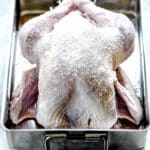
THE BEST Turkey Brine Recipe — Dry
Equipment
- Rimmed baking sheet or roasting pan
Ingredients
- 14-16 pound turkey , giblets and innards removed
- 4 tablespoons kosher salt
- 4 teaspoons sugar
Instructions
- Remove the innards from the turkey and drain any defrosted liquid from the turkey, inside and out. Pat the turkey dry. Place on a baking sheet with raised sides or in a roasting pan to catch the liquid that will release from the turkey as it’s drawn out of the turkey.
- With your fingers, gently loosen the skin from the breast and legs of the bird, as much as you can without tearing the skin. Rub the salt mix under and on top of the skin and inside the cavity of the bird.
- Set the turkey in the fridge, uncovered, for 24-48 hours to work its magic before cooking.
Notes
Nutrition
4 Brining “Don’ts”
- Don’t brine a turkey that is labeled kosher, marinated, or basted. They’ve already been flavored.
- Don’t brine a turkey that you are planning on deep frying.
- Don’t forget to remove the giblets and neck before brining.
- Never rinse a turkey before brining.
More Turkey Recipes
- Juicy Roast Turkey Breast
- Herb Butter Rotisserie Turkey
- Buffalo Oven Roasted Turkey
- Roasted Turkey Breast With Lemon And Oregano
Special Tools
GET THE THANKSGIVING PREP GUIDE: Get your FREE Thanksgiving plan, timeline, recipe and menu inspiration, plus all the tips & tricks you need to pull off the best Thanksgiving yet. AND! FREE printable.
We send good emails. Subscribe to FoodieCrush and have each post plus exclusive content only for our subscribers delivered straight to your e-mail box.
Follow me on Instagram, Facebook, Pinterest for more FoodieCrush inspiration.
As always, thank you for reading and supporting companies I partner with, which allows me to create more unique content and recipes for you. There may be affiliate links in this post of which I receive a small commission. All opinions are always my own.

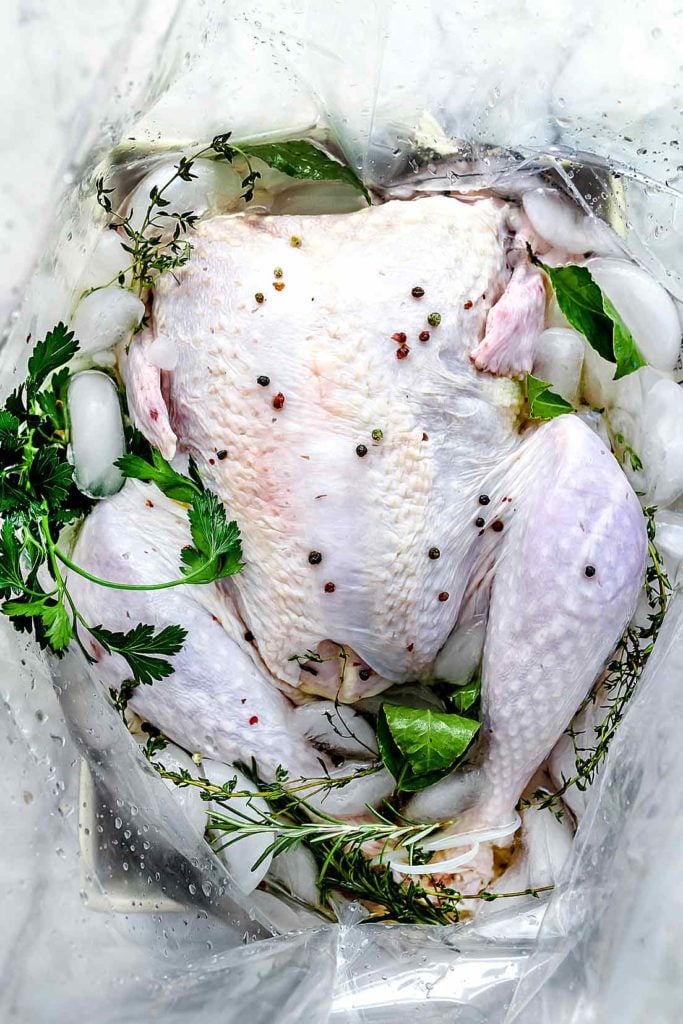
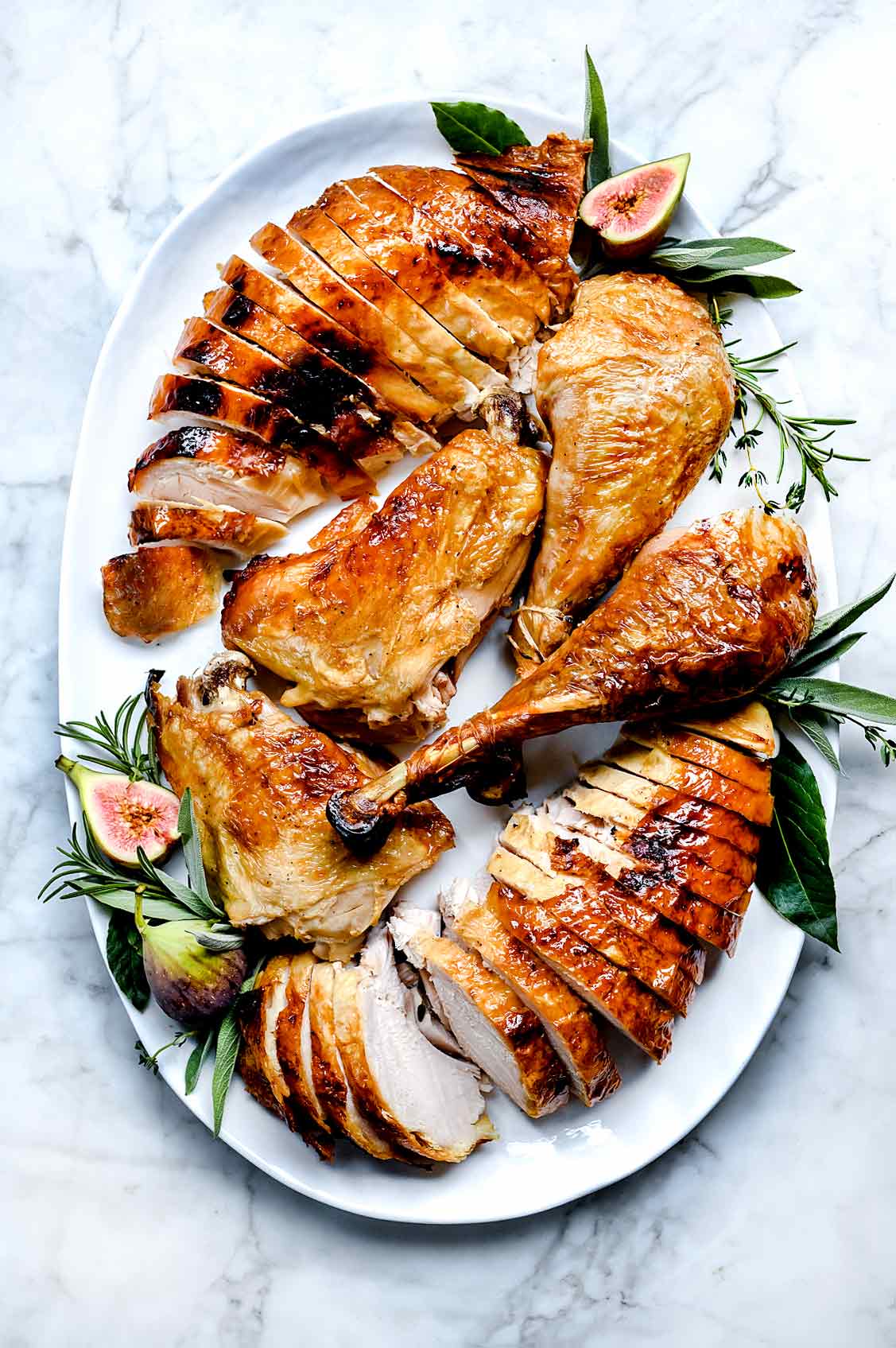

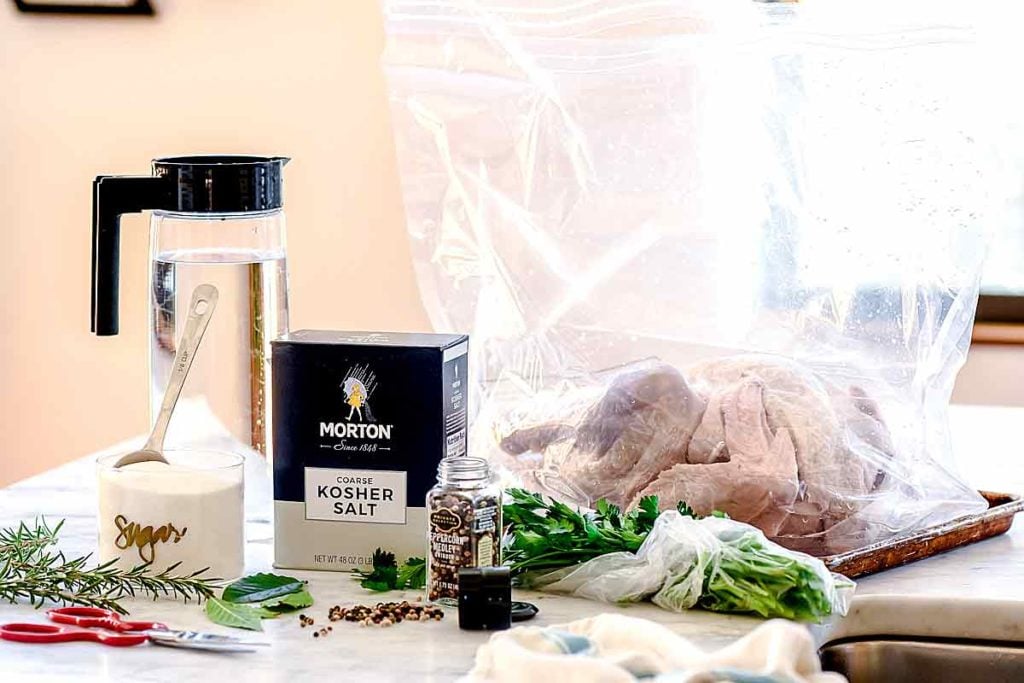
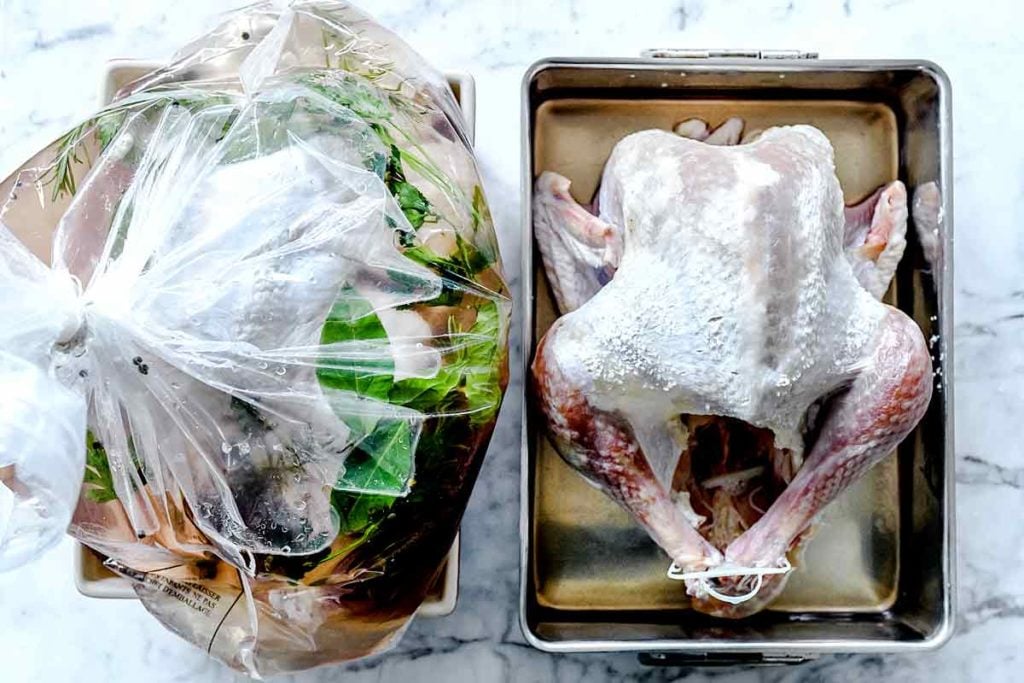
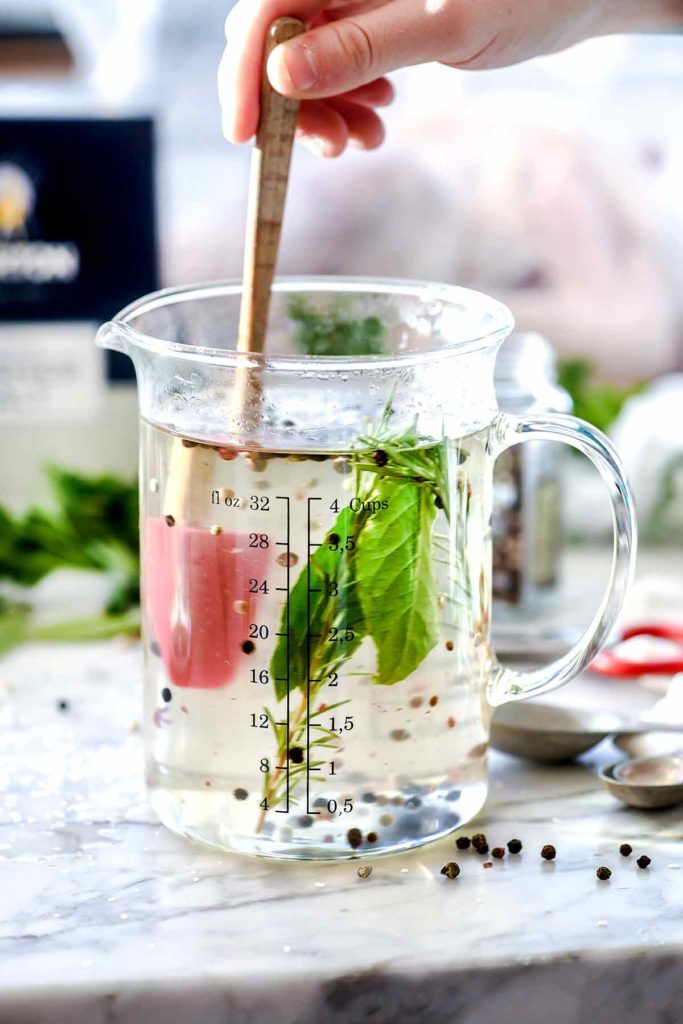
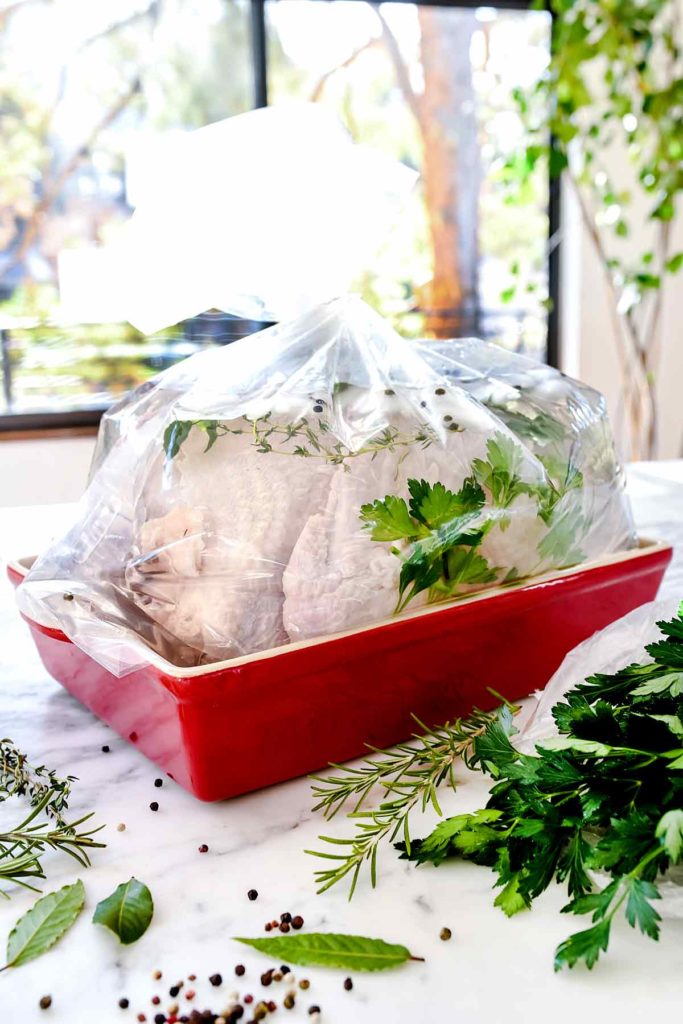

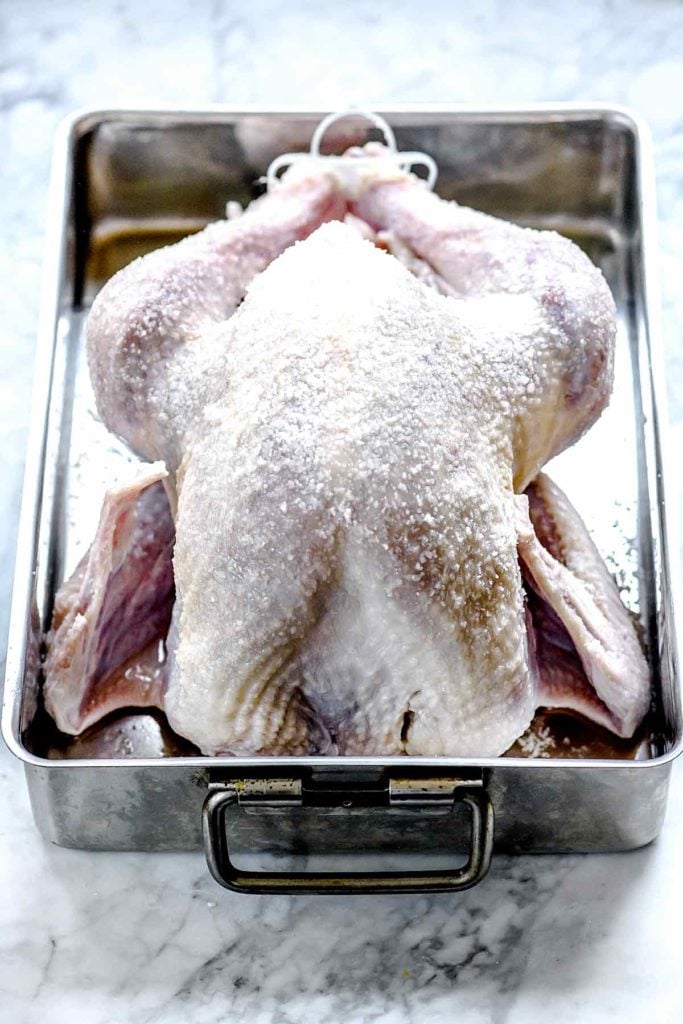
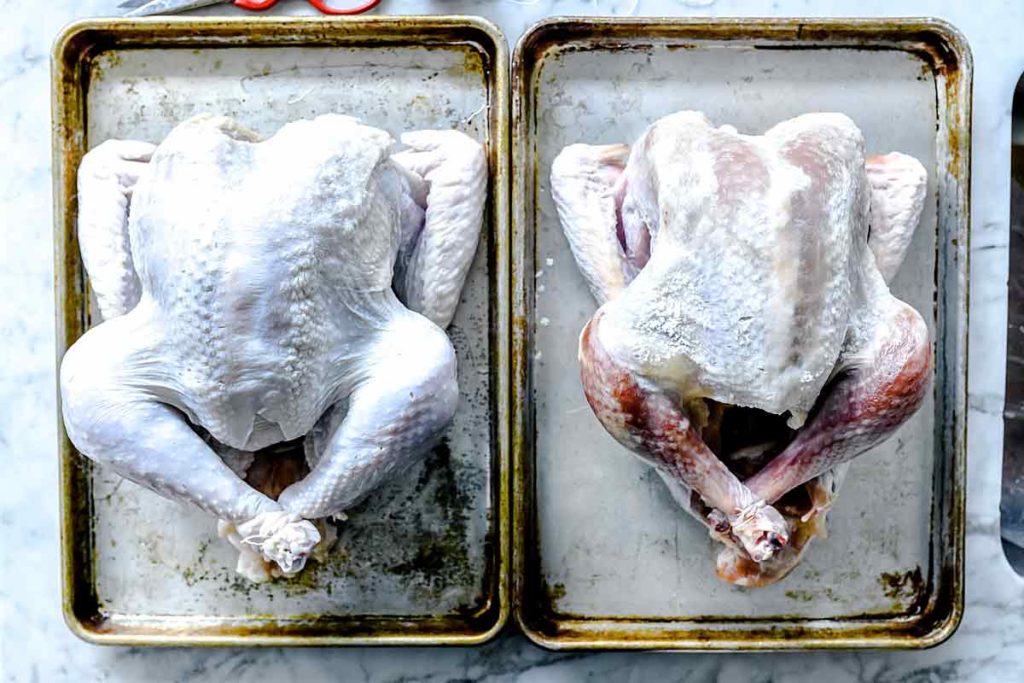
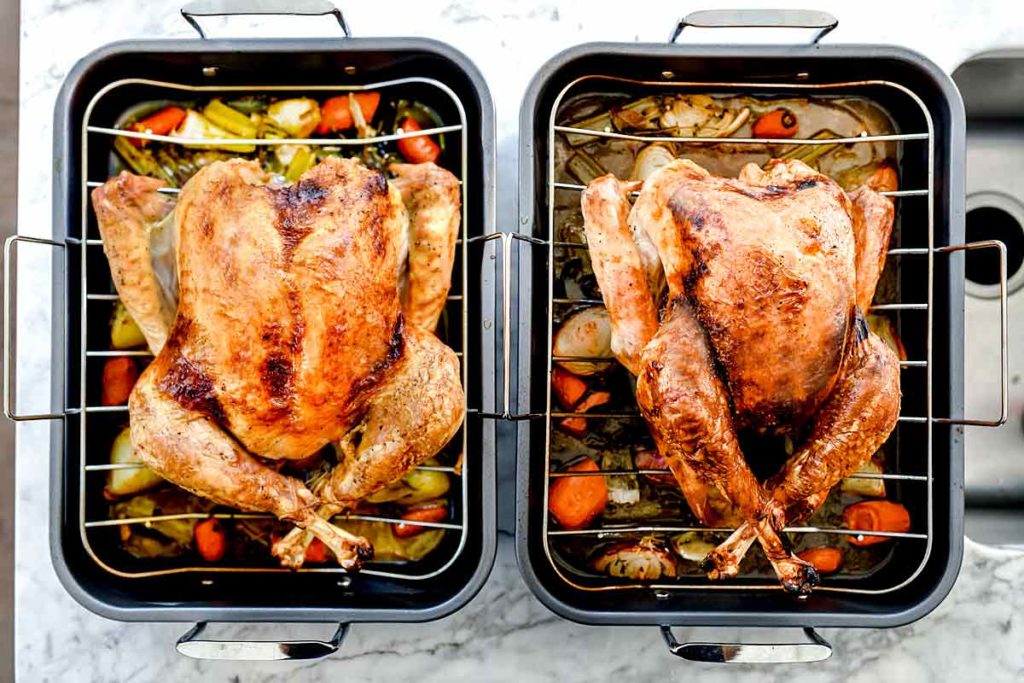
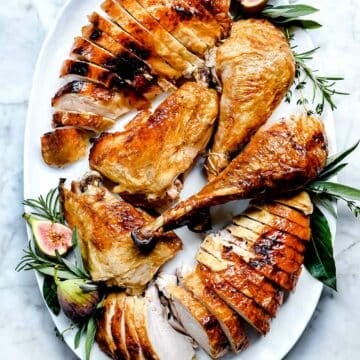


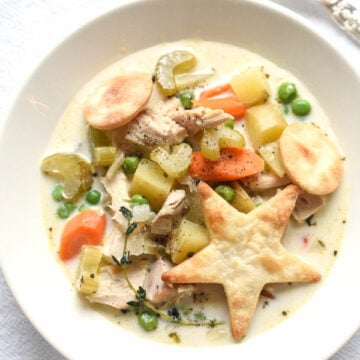

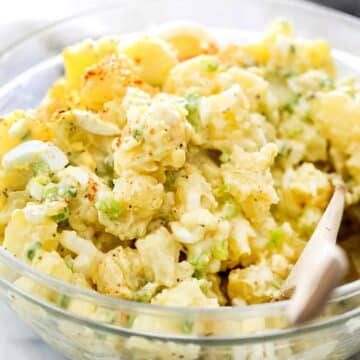

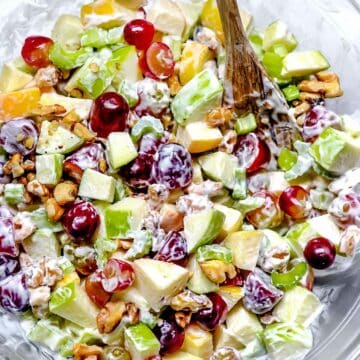
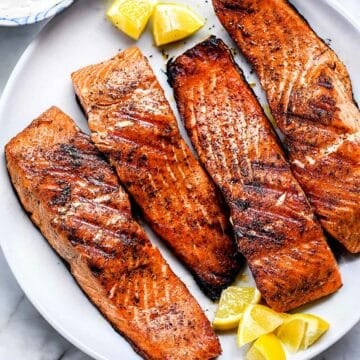
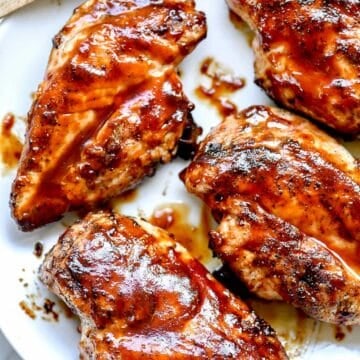
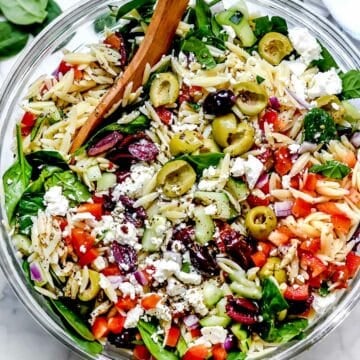
Britt
I followed these directions and made the best Turkey ever! Thank you so much!
Hayley
We’re so glad you enjoyed it, Britt!
Megan
Do you think the skin might brown up better if the wet brined bird was given an extra 24hrs uncovered in the fridge?
Hayley
Hi Megan, we have heard that could lead to a crispier exterior, so it’s worth a try! If you do try it, definitely let us know how it turns out!
Chantelle
Can you cook a wet brine turkey after the brining process in an infared cooker?
Hi Chantelle, I’ve never used an infra red cooker so I can’t answer that.
Beks
For Christmas, I brined a turkey breast in this recipe. It was the rave of the dinner. I will deffinetly be using this with all my special occasions with turkey
Ashley @ Foodie Crush
So glad to hear that! Thank you Beks. Happy Thanksgiving
Lori
This is fabulous. I used a chicken instead of a turkey and it was super moist and tasty. My husband wouldn’t stop raving about it.
Ashley @ Foodie Crush
That sounds amazing!
Staci Schwartz
Hi Heidi,
What should I look for when shopping for a turkey that hasn’t been brined yet? In my experience most stores only have turkeys that have already been exposed to salt. Appreciate any help you can offer.
Staci, I’ve been buying the basic, Kroger brand frozen young turkey. The packaging does say it has been basted with 8% of turkey broth, sodium phosphate, and natural flavoring, which I think is standard for grocery store turkeys. In my opinion, this additional salt bath isn’t the same as a brine, and doesn’t add much flavor so the additional brine works great.
Sabrina
thank you for this very helpful reminder, I’d forgotten most of this stuff, even if I knew it last year! Much appreciated
Ashley @ Foodie Crush
You’re ready for Thanksgiving now!
Happy to remind you Sabrina.
Barbara Skinner
I’m planning to make a rotisserie Turkey using your herb butter recipe. Should I brine it first?
Yes Barbara! I would brine it for sure with the wet brine. It will be super juicy. Here’s my recipe for the rotisserie turkey http://www.foodiecrush.com/herb-butter-rotisserie-turkey/
Andrea Scott
I’m laughing at the salt nutrition numbers. That’s crazy! Thank you so much to you and your family for taking on this task and taste test! I was intrigued with the dry brine too as I’ve seen it posted all over insta. But, wet as I’ve done now for years wins! Thanks for the link on bags too. Bet your all burnt out on Turkey now. Can’t believe it’s Thanksgiving next week!
Happy to take on the task Andrea. All in the name of the juicy bird. Have a great Thanksgiving.